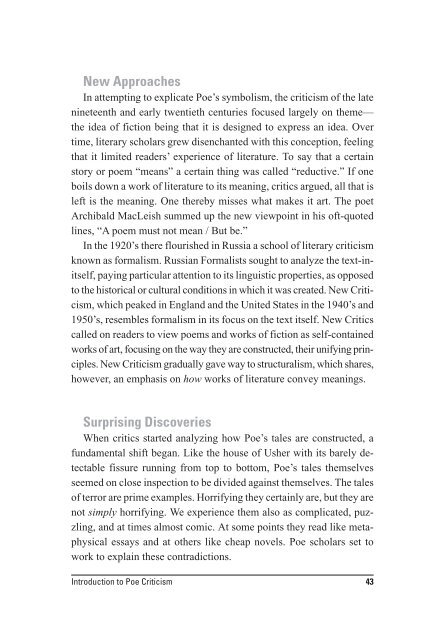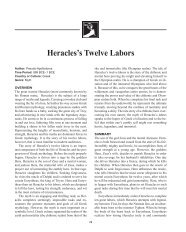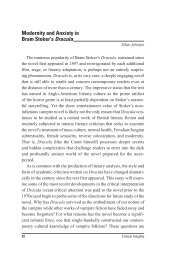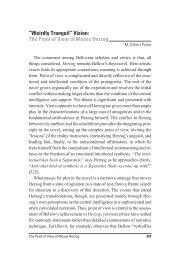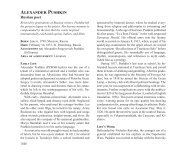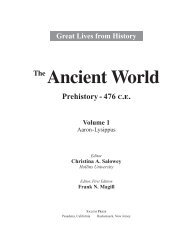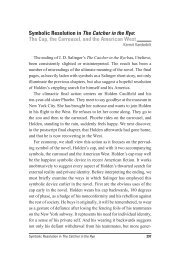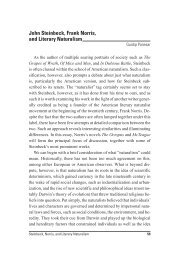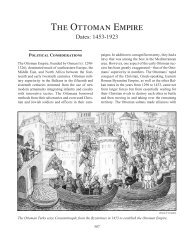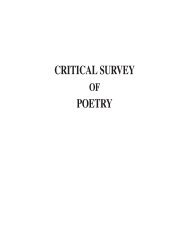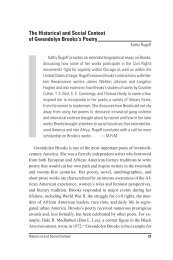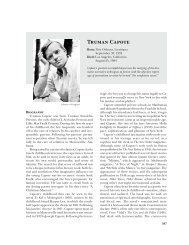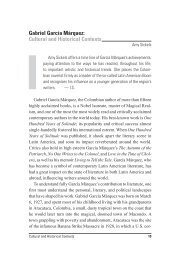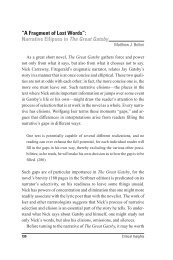Introduction to Poe Criticism Overview: Poe and the ... - Salem Press
Introduction to Poe Criticism Overview: Poe and the ... - Salem Press
Introduction to Poe Criticism Overview: Poe and the ... - Salem Press
Create successful ePaper yourself
Turn your PDF publications into a flip-book with our unique Google optimized e-Paper software.
New Approaches<br />
In attempting <strong>to</strong> explicate <strong>Poe</strong>’s symbolism, <strong>the</strong> criticism of <strong>the</strong> late<br />
nineteenth <strong>and</strong> early twentieth centuries focused largely on <strong>the</strong>me—<br />
<strong>the</strong> idea of fiction being that it is designed <strong>to</strong> express an idea. Over<br />
time, literary scholars grew disenchanted with this conception, feeling<br />
that it limited readers’ experience of literature. To say that a certain<br />
s<strong>to</strong>ry or poem “means” a certain thing was called “reductive.” If one<br />
boils down a work of literature <strong>to</strong> its meaning, critics argued, all that is<br />
left is <strong>the</strong> meaning. One <strong>the</strong>reby misses what makes it art. The poet<br />
Archibald MacLeish summed up <strong>the</strong> new viewpoint in his oft-quoted<br />
lines, “A poem must not mean / But be.”<br />
In <strong>the</strong> 1920’s <strong>the</strong>re flourished in Russia a school of literary criticism<br />
known as formalism. Russian Formalists sought <strong>to</strong> analyze <strong>the</strong> text-initself,<br />
paying particular attention <strong>to</strong> its linguistic properties, as opposed<br />
<strong>to</strong> <strong>the</strong> his<strong>to</strong>rical or cultural conditions in which it was created. New <strong>Criticism</strong>,<br />
which peaked in Engl<strong>and</strong> <strong>and</strong> <strong>the</strong> United States in <strong>the</strong> 1940’s <strong>and</strong><br />
1950’s, resembles formalism in its focus on <strong>the</strong> text itself. New Critics<br />
called on readers <strong>to</strong> view poems <strong>and</strong> works of fiction as self-contained<br />
works of art, focusing on <strong>the</strong> way <strong>the</strong>y are constructed, <strong>the</strong>ir unifying principles.<br />
New <strong>Criticism</strong> gradually gave way <strong>to</strong> structuralism, which shares,<br />
however, an emphasis on how works of literature convey meanings.<br />
Surprising Discoveries<br />
When critics started analyzing how <strong>Poe</strong>’s tales are constructed, a<br />
fundamental shift began. Like <strong>the</strong> house of Usher with its barely detectable<br />
fissure running from <strong>to</strong>p <strong>to</strong> bot<strong>to</strong>m, <strong>Poe</strong>’s tales <strong>the</strong>mselves<br />
seemed on close inspection <strong>to</strong> be divided against <strong>the</strong>mselves. The tales<br />
of terror are prime examples. Horrifying <strong>the</strong>y certainly are, but <strong>the</strong>y are<br />
not simply horrifying. We experience <strong>the</strong>m also as complicated, puzzling,<br />
<strong>and</strong> at times almost comic. At some points <strong>the</strong>y read like metaphysical<br />
essays <strong>and</strong> at o<strong>the</strong>rs like cheap novels. <strong>Poe</strong> scholars set <strong>to</strong><br />
work <strong>to</strong> explain <strong>the</strong>se contradictions.<br />
<strong>Introduction</strong> <strong>to</strong> <strong>Poe</strong> <strong>Criticism</strong> 43


